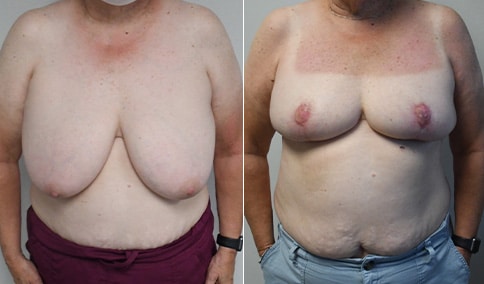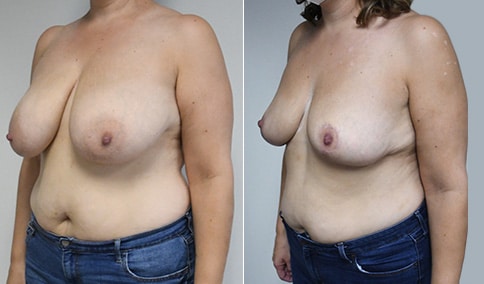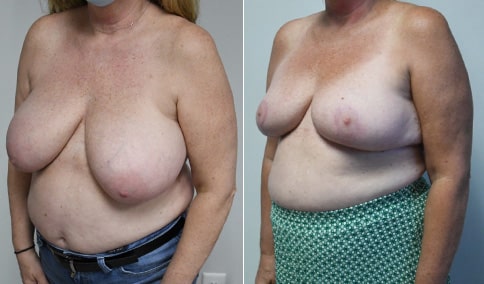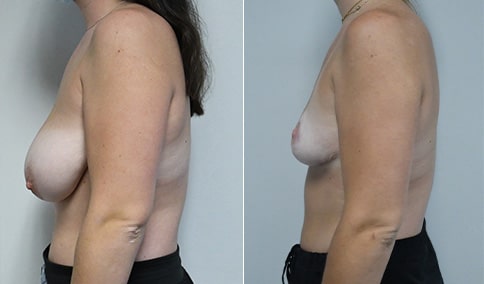A 64 yo woman who described herself as a 36 DD bra and has had problems with back pain, shoulder pain, grooving and irritation of the shoulders, as well as difficulty exercising. She is shown before and again, 5 months after breast reduction with the removal of more than 500 grams of tissue from each breast. She is thrilled with her new shape and size. Her symptoms are gone. And she “wishes that she had done this sooner”. She was worried about the pain from surgery, and although everyone’s experience is different, because of our Enhanced Recovery After Surgery (ERAS) protocol, her surgery was performed as an outpatient, and she only took Advil after.





































Cosmetic & Plastic Surgery Specialist
"I treat my patients like I would treat
- Jonathan D. Hall, MD, FACSmembers of my own family."
Schedule Consultation